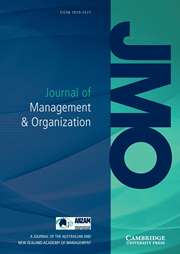No CrossRef data available.
Article contents
From dreamers to doers: A personal and job resources interaction among intrapreneurial managers
Published online by Cambridge University Press: 18 October 2024
Abstract
Drawing on job-demands resources and self-consistency theories, this study investigates individual and contextual factors influencing managers’ intrapreneurial intention (INI). We focus on the role of personal resources (organization-based self-esteem and proactivity) related to INI. Further, we analyze job resources (top management support and role clarity) shaping INI, and their interaction with proactivity. Our data comprises 193 Kosovan managers employed in companies varying in size and industry. The results show that organization-based self-esteem and proactivity are positively related to INI. Additionally, proactivity serves as the underlying mechanism, mediating organization-based self-esteem-INI relationship. Furthermore, job resources – top management support and role clarity – strengthen the likelihood of INI among proactive employees, suggesting a moderated mediation model.
By jointly examining individual and contextual antecedents of INI, this study contributes to the debate of who the intrapreneur is and what nurtures his/her inclinations. Furthermore, this is among the few studies to examine INI using a managerial sample and in an emerging economy context.
Keywords
- Type
- Research Article
- Information
- Copyright
- © The Author(s), 2024. Published by Cambridge University Press in association with Australian and New Zealand Academy of Management.


